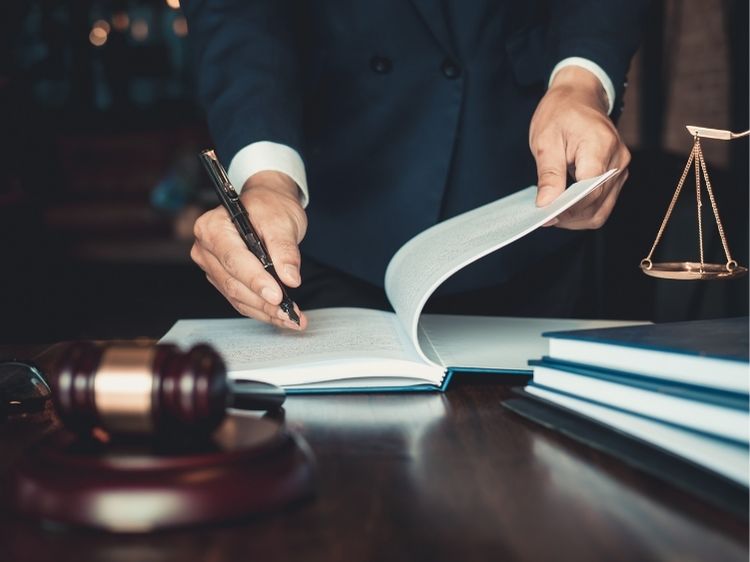Product Liability Lawsuits: A Comprehensive Guide
Ever bought a product that didn’t quite meet expectations? Or worse, caused injury or damage? You’re not alone. Every year, countless consumers find themselves in the murky waters of product liability lawsuits. These legal actions are a crucial mechanism for holding manufacturers, distributors, and sellers accountable for defective or dangerous products. But what exactly are product liability lawsuits, and how do they work?
In this article, we’ll dive deep into the world of product liability, unraveling its complexities in an engaging, easy-to-understand way. Whether you’re a consumer curious about your rights or someone in the industry, this guide will provide valuable insights into the legal landscape surrounding product liability.
What Are Product Liability Lawsuits?
Product liability lawsuits arise when a product causes harm due to defects. These defects can be in design, manufacturing, or marketing. In essence, if a product doesn’t work as safely as an average consumer would expect, and someone gets hurt as a result, the grounds for a lawsuit are often solid.
But it’s not just about defective products. A product liability lawsuit can also be filed if a company fails to provide adequate warnings or instructions, leading to misuse and subsequent injury. The goal? To ensure companies prioritize safety and accountability.
Types of Product Defects
Understanding the types of defects is key to grasping product liability. Here’s a breakdown:
- Design Defects: These are inherent flaws in the product’s design, making it dangerous even before it’s manufactured. Think of a car model that’s prone to flipping over during sharp turns. The defect lies in the design itself, making every unit of that product potentially hazardous.
- Manufacturing Defects: These occur during the production process. A well-designed product might become dangerous if something goes wrong on the assembly line. Maybe a batch of toys has small, detachable parts that weren’t intended to be removable, posing a choking hazard to children.
- Marketing Defects: Also known as “failure to warn,” these defects involve inadequate instructions or warnings about the product’s proper use. For example, a medication might be safe when used as directed, but without proper warnings about potential side effects, consumers could be at risk.
Who Can Be Held Liable?
When it comes to product liability lawsuits, it’s not just the manufacturer who can be in the hot seat. Multiple parties along the supply chain could share the blame, including:
- Manufacturers: They’re often the first point of liability, especially if the defect is in design or manufacturing.
- Distributors: If a distributor knowingly sells a defective product, they could also be held responsible.
- Retailers: Even the store where the product was purchased might face liability, particularly if they were aware of the defect and continued to sell the item.
Common Examples of Product Liability Lawsuits
To better understand the impact of product liability, let’s look at some real-world examples:
- Automotive Defects: Cars with faulty airbags or ignition switches have led to massive recalls and significant lawsuits. The consequences? Injuries, fatalities, and billions in settlements.
- Pharmaceuticals: Drugs with undisclosed side effects or harmful interactions can lead to severe health complications, resulting in class-action lawsuits against the manufacturers.
- Consumer Goods: Everyday products like electronics, toys, and household appliances can also be the subject of lawsuits if they malfunction or are poorly designed.
The Legal Process of a Product Liability Lawsuit
Navigating a product liability lawsuit can be daunting. Here’s a simplified overview of the process:
- Filing the Complaint: The lawsuit begins with the injured party filing a complaint against the responsible parties. This document outlines the alleged defects and the damages sought.
- Discovery Phase: Both sides exchange information, gather evidence, and take depositions. This phase is crucial for building a strong case, as it reveals the facts and details of the incident.
- Settlement Negotiations: Many product liability cases are settled out of court. Both sides may negotiate a settlement to avoid a lengthy trial. If an agreement is reached, the case is closed.
- Trial: If a settlement isn’t reached, the case goes to trial. Here, both sides present their arguments, and a judge or jury decides the outcome. This phase can be unpredictable, with outcomes ranging from complete dismissal to substantial compensation.
- Appeal: If either party is dissatisfied with the verdict, they may file an appeal, prolonging the legal process further.
Key Factors Influencing the Outcome
Several factors can influence the outcome of a product liability lawsuit:
- Evidence of Defect: Strong evidence that clearly shows the product was defective is critical. This could include expert testimony, product recalls, or documentation of similar incidents.
- Causation: It’s not enough to prove the product was defective. The plaintiff must also show that the defect directly caused the injury or damage.
- Severity of Injury: The more severe the injury, the higher the potential compensation. However, this also increases the burden of proof for the plaintiff.
- Defendant’s Defense: Companies often have robust legal teams and may argue that the product was misused or that the plaintiff assumed the risk by using the product.
FAQs About Product Liability Lawsuits
Q1: What should I do if I’m injured by a defective product? If you’re injured by a defective product, seek medical attention immediately. Document the incident, save the product and packaging, and contact a lawyer who specializes in product liability cases.
Q2: Can I file a product liability lawsuit if I wasn’t the one who bought the product? Yes, you can. Even if you weren’t the purchaser, if you were injured by the product, you might have grounds to file a lawsuit.
Q3: How long do I have to file a product liability lawsuit? The timeframe, known as the statute of limitations, varies by state. It’s usually between two to four years from the date of injury, but it’s crucial to consult with a lawyer to understand your specific situation.
Q4: What damages can I recover in a product liability lawsuit? Damages can include medical expenses, lost wages, pain and suffering, and sometimes punitive damages designed to punish particularly egregious behavior by the defendant.
Q5: Do I need expert testimony to win a product liability case? In most cases, yes. Expert testimony is often essential to establish the defect and link it to the injury. Experts can provide crucial insights into the product’s design, manufacturing process, or failure analysis.
Conclusion
Product liability lawsuits play a vital role in consumer protection, ensuring that companies are held accountable for the safety of their products. While the process can be complex, understanding your rights and the legal landscape can empower you to take action if you’ve been harmed by a defective product. Whether you’re pursuing a claim or simply want to be informed, this guide offers a comprehensive overview of the key aspects of product liability law.







